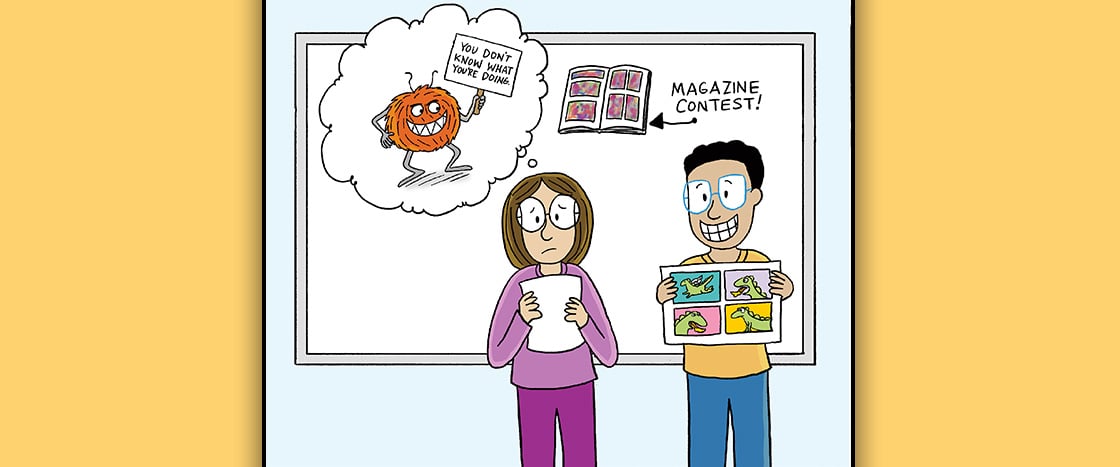Graphix
Write to Win
Write a comic or paragraph in which you and Nat discuss your doubt gremlins. Include advice Nat might give about how to deal with them based on what she learned in the story—and advice you would share based on your own experiences. Entries must be submitted to “Nat Contest” by a teacher, parent, or legal guardian.* Five winners will each receive a copy of Nat for Nothing by Maria Scrivan.
*Entries must be written by a student in grades 2-8 and submitted by their teacher, parent, or legal guardian, who will be the entrant and must be a legal resident of the U.S. age 18 or older. Visit the Storyworks Contests page for more information.


